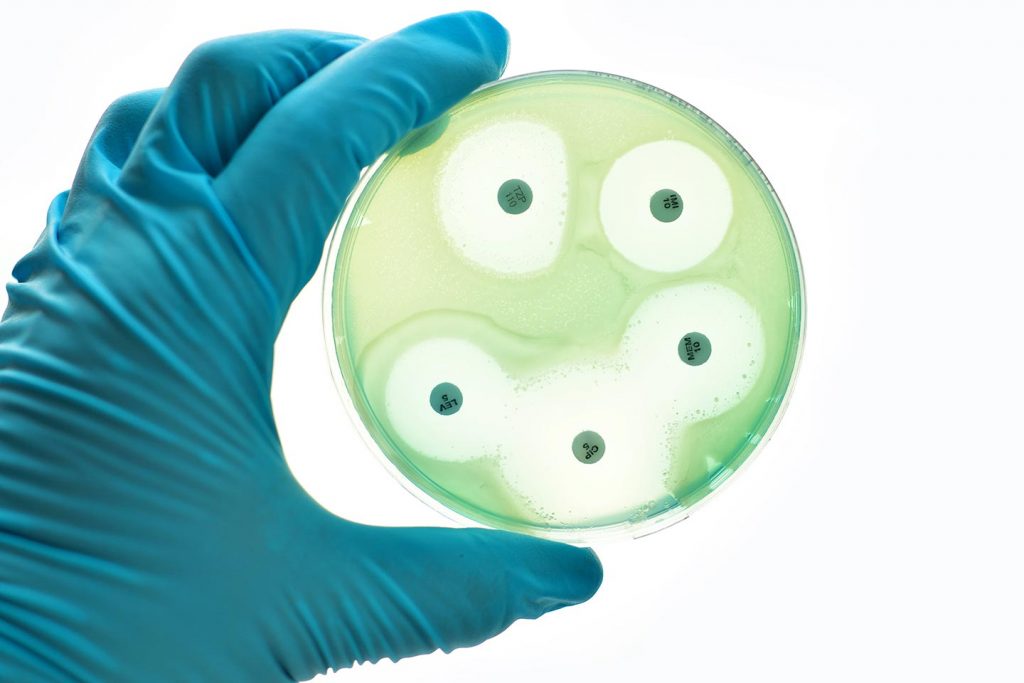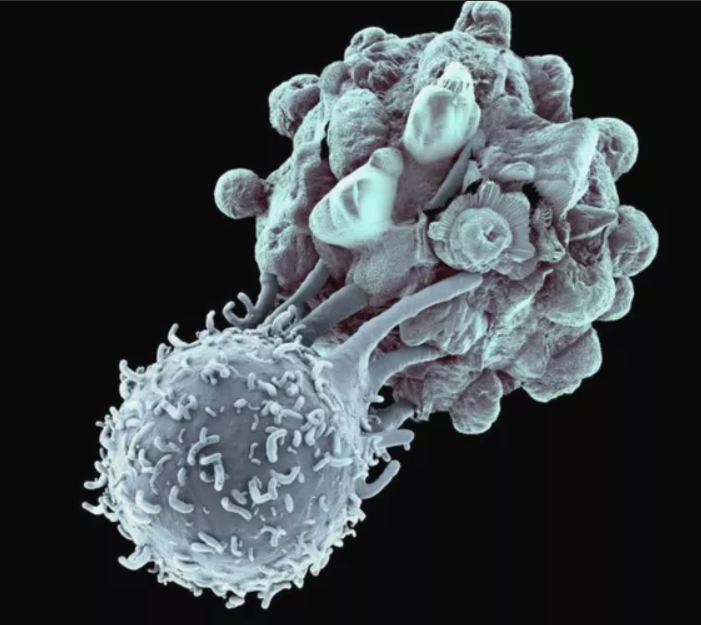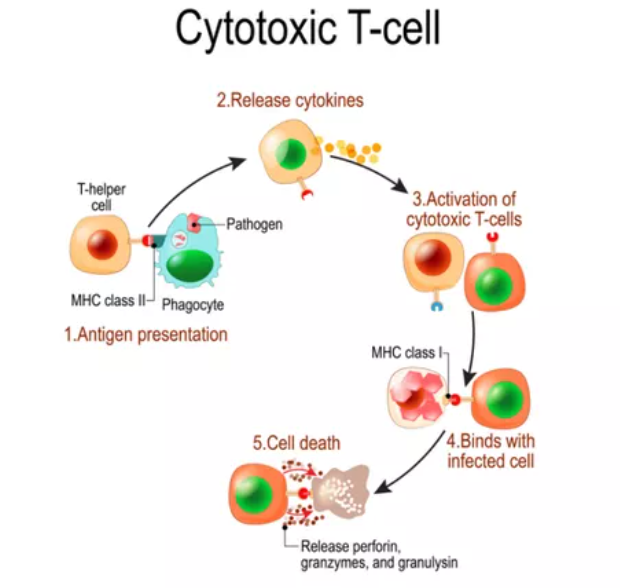Antibiotic resistance is the effect of immune function (that protects all life forms) from the cause of the immune response: the invader parasites (viruses and bacteria). The real marvel is the immune system’s mechanism, which operates dynamically complex and deadly manner to protect life from invaders (even bacteria can be infected with viruses).
Antibiotic resistance is not made manifest by mutated invaders “evolving” into stronger forms, but by a weakened immune response in the life form
Mutated invaders (viruses and bacteria) are arguably in a degraded condition by a mutation that works by breaking preexisting genetic sequences– locking or deleting expression mechanisms. The intense and generally rapid immune destruction and targeting make short work of these invaders. However, often when immunity is weakened, some remnants (mutated) “survivors” (in quotes because viruses are not alive) are rendered genetically invisible to the power of immune function.
“Antibiotics are used to treat or prevent some types of bacterial infection. They work by killing bacteria or preventing them from spreading. But they do not work for everything.”
https://www.nhs.uk/conditions/antibiotics/
To add to this definition, we should clarify that antibiotics are human-made treatments (such as penicillin, among others) that are used to assist WHEN weakened immune systems are overwhelmed by pathogenic invaders. Antibiotics do not function like our immune systems but effectively sicken the pathogen and thereby inhibit rapid replication (slowing the spread) in the infected host. This ultimately allows the immune system (hopefully) time to overcome the infection of the invaders by natural immune function.
The inference that antibiotic resistance is evidence for evolution
We are assured that antibiotic resistance is an observable consequence of evolution (via natural selection) within the invaders of viruses and bacteria that become stronger right before our eyes. The antibiotic action due to environmental pressures (those exaggerated by the immune response or usually its weakened state) finds mutated invaders surviving, flourishing, and replicating. These (degraded) invaders thereby pass some traits to their offspring. This can result in a fully resistant generation. But is this really what is going on?
No, it is not!
Below is a video that SEEMS to reinforce this argument for antibiotic resistance displaying evolution. Watch the video but be sure to read the critique below afterward.
After watching, you might have concluded that this is strong evidence for “evolution.” But it is a misrepresentation. How so?
As an analogy, let’s use a hypothetical experiment where we do the same thing, but researchers use insects and bug killers (because they are not very tiny). At the center of the media, the most insecticide is applied with progressively less until we get to the edges with the least amount. This is exactly what happened with the bacteria in the video, although the effect was not visible until later because bacteria individually are very small.

The bacteria seem to replicate much slower in the middle of the media, but this is because there are fewer initial survivors, yes, they are likely mutants, but that is serendipitous– more on this later.
What happens in our hypothetical bug experiment? The same thing as what happened to bacteria. Almost all the bugs died in the middle, where the most insecticide was applied, but a few survivors remain. Populations are greater in the middle, and fewer are killed as less and less was applied on the edges. The bacteria in the video are purposefully staged to display evolution by starting on the edges and then “evolving” into the middle of the media, but this is not what has happened at all. More died in the middle and less on the edges, so the sides recovered faster.
Anti-biotics are bug killers for bacteria using the human body as a host. Of those very few that survived in the middle, they are riddled with the most severe genetic mutations. Like a person exposed to nuclear radiation and cigarette smoking for 50 years. They have degraded DNA genetics, are degraded mutants, and are alive. Which is a “benefit.”
Now the fault in this assumption is that these mutations are “good” because they allowed the bug’s survival. Which is true- they are alive, but they are massively degraded! It was only by really pure blind good luck that they survived. I know this sounds like the claims that evolution has mutations and survival, but it is common descent but counterintuitive good fortune.

These bacteria are survivors based on becoming antibiotic-resistant (or mutated bugs in our analogy). True. But these life forms are vastly weakened and are more threatened to go extinct, not by antibiotics or bug killers but because they are degraded genetically.
Many antibiotic bacteria are dysfunctional, deformed, and deleteriously degraded. Yet, they are still alive, which is a benefit– right? Yes, like Sickel Cell provided a benefit of survival at the vast expense of disability. This is the case with antibiotic-resistant bacteria.
Causes for antibiotic resistance can be easily understood by beginning with what causes the resistance. As we have covered bacteria are pathogen invaders. Antibiotics are developed to assist our immune system in ultimately eliminating these invaders. The antibiotic action provides an “environmental pressure” that allows the immune response to gain the upper hand. In the end, only those “lucky” few that “gained” a genetic mutation, thereby rendered invisible to the t-cells remain. This inadvertently permits survival and replication of only the mutated.-2 These mutated bacteria pass this mutated sequence to their offspring, which emerge as an antibiotic-resistant generation.-2 The marvel here is not the copy error mutation but the immune system and its incredible ability to kill invaders by specific genetic code.-3 Antibiotic resistance is a great example of how mutant invaders escape certain death, but are not strong evidence for universal common descent evolution.
We must understand how immunity works at a basic level in the human body to determine what role viruses might play in evolution (if any). Once bacterial “bugs” invade the body and start replicating our immunity, “t-cells” kick into action. There are many types of t-cells that coordinate immune response. For simplicity, think of the t-cell response like a mafia hitman. The killer t-cell gets specific orders on which invaders are to be assassinated. Like a hitman might receive a target photograph, t-cells are provided with specific genetic sequences to identify the precise target. The t-cells begin to make their hits, destroying the targets rapidly.


Here is how antibiotic resistance manifests. Because the t-cells target invaders by genetic sequences, those “oddball” mutated individuals survive elimination. These are a vast minority population at this point and would likely have died out if not for the antibiotic treatments. However, as they replicate, assuming they are not degraded to the point of cell death, the same immune response will also ensue for the new versions. Yes, the same antibiotic will not be effective, but this resulting “resistance” was serendipitous.
“Before bacteria can multiply and cause symptoms, the immune system can typically kill them. White blood cells (WBCs) attack harmful bacteria and, even if symptoms do occur, the immune system can usually cope and fight off the infection.”
https://www.medicalnewstoday.com/articles/10278#what-are-antibiotics
Antibiotic resistance is, therefore, not strong evidence for defending Universal common descent evolution (UCD). This is true despite filling many buzz words associated with evolution like mutation, resistance, and survival of the pathogen.
A better inference in light of all the evidence, especially that of the amazing immune system, is intelligent design. It is the immune system that is amazing, not pathogens! T-cells off invaders rapidly by the billions. Only by happenstance and good fortune do those genetically mutated “survivors” remain, but (nearly all) will ultimately be terminated by the healthy immune response. Overuse and misuse of antibiotics weaken immunity, rendering these invaders more dangerous.
Those antibiotic resistant (degraded) “survivors” are merely by-products (the effect) of a system of immunity elimination—certainly not evidence for evolution.
Summary: If antibiotic resistance is adequately understood, it provides an abysmal example supporting universal common descent evolution. Bacteria can be good or bad within the bodies of living organisms. When harmful bacteria enter the body, a myriad of biological weaponry is deployed by our immune system to identify (by genetic sequence), find, and destroy these invaders.
It is the immune system that is the marvel- not viruses. Immunity, not the mutated harmful bacteria sickened by antibiotics, is the true marvel. Some bacterial attacks have been remedied by artificial vaccines designed to help our immune systems eliminate these invaders. The vaccines (like our natural immune systems) receive the “hit” orders by a specific genetic sequence. This information is used by many biological functions, including T-Cells that find and destroy these specific genetically sequenced harmful bacteria. In the end, only the remnant mutated bacteria are invisible to our immune systems. Now, these “survivors” multiply and can become prevalent, but in most cases, our immune system can also overcome these.
All measurable mutations have been discovered to have resulted from genetic entropy or broken genetic sequences. It can render survival benefits, as many other examples of broken genetics might; however, considering antibiotic resistance as an example of UCD evolution is largely ill-founded. Such conclusions focus on the effect and not the cause. The idea that antibiotic resistance is evidence of UCD evolution rests upon a misunderstanding of biology and the immune system.
Sources
1-https://www.sciencedaily.com/terms/antibiotic_resistance.htm;
2-https://www.ncbi.nlm.nih.gov/pmc/articles/PMC2937522/;


